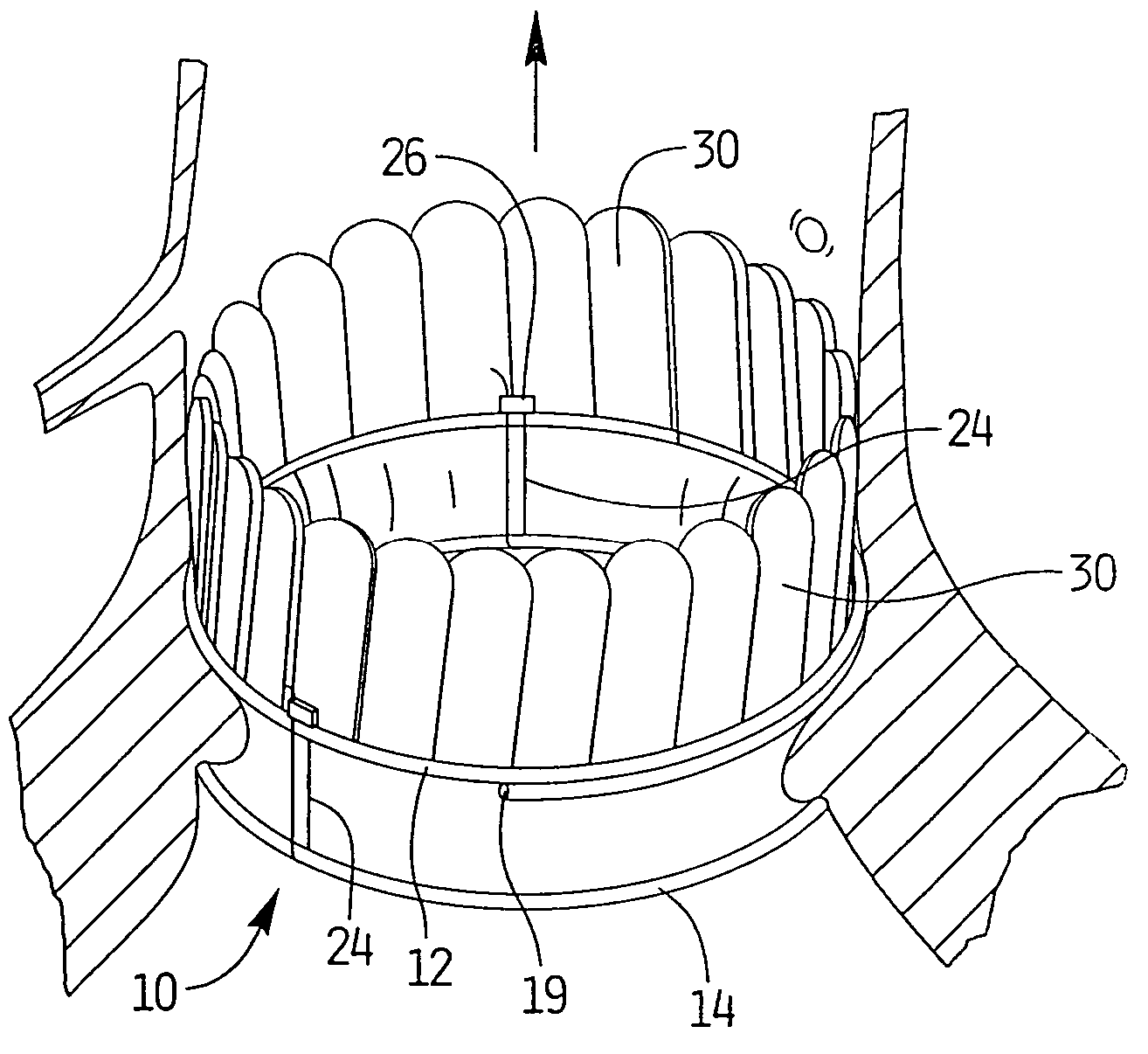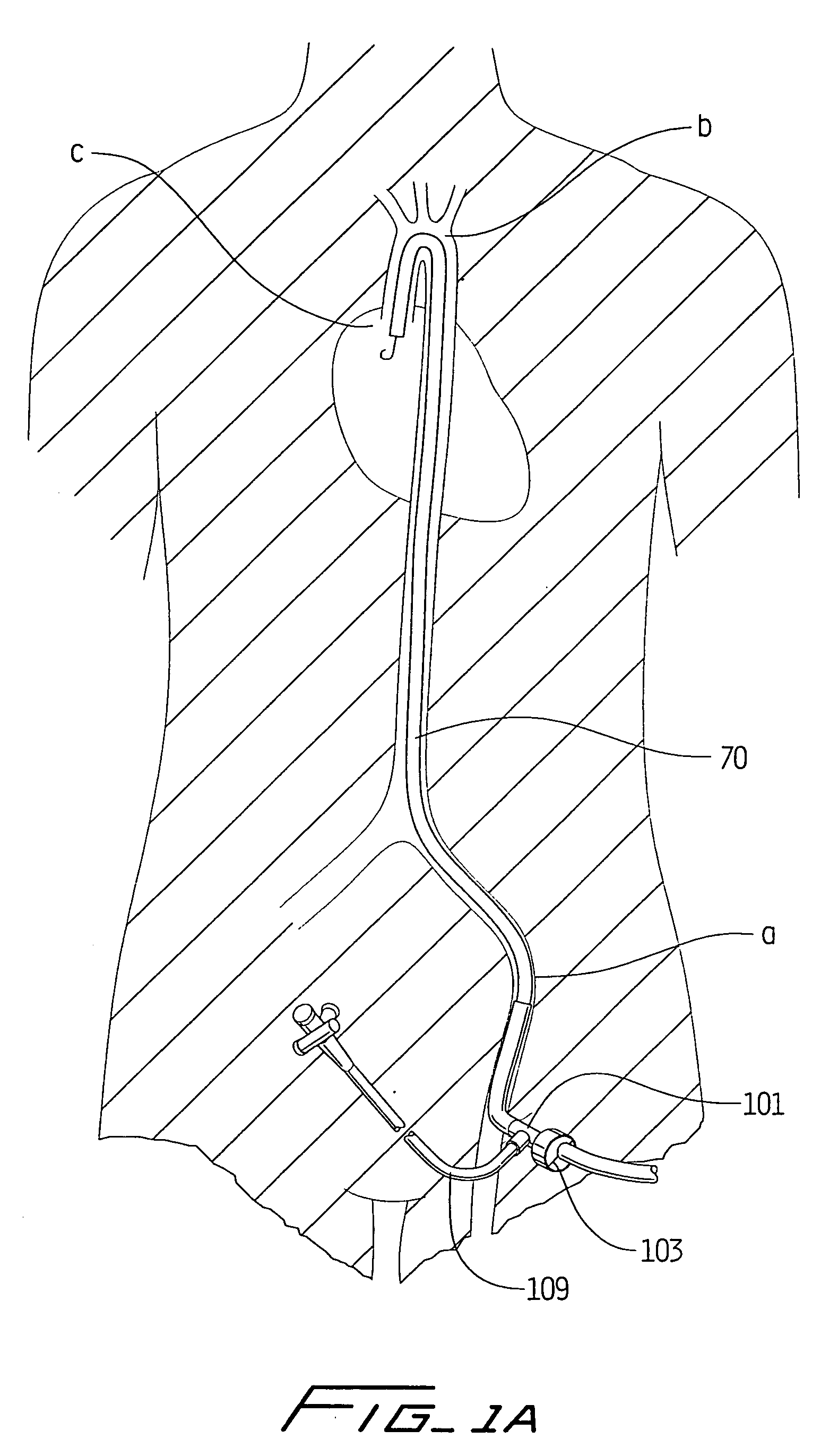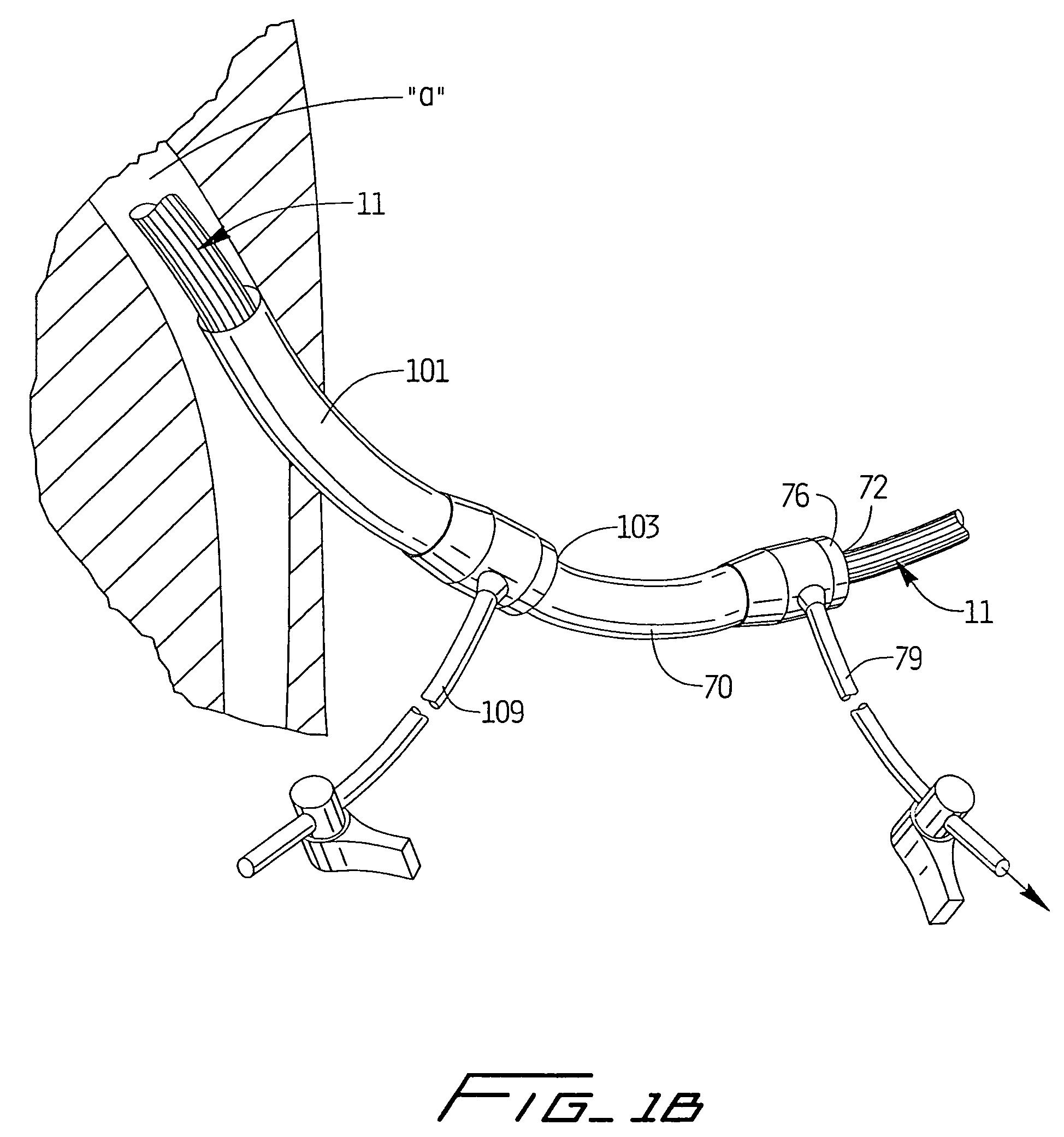Percutaneous aortic valve
a technology of aortic valve and percutaneous aortic valve, applied in the field of prosthetic valves, can solve the problems of reduced heart blood output, blood leakage back into the heart, chest pain,
- Summary
- Abstract
- Description
- Claims
- Application Information
AI Technical Summary
Benefits of technology
Problems solved by technology
Method used
Image
Examples
first embodiment
[0066] Turning first to FIGS. 2A and 2B, a valve resecting instrument is designated by reference numeral 50. Resecting instrument 50 is inserted through delivery catheter 70. Delivery catheter 70 is inserted through a small incision in the patient's leg to access the femoral artery (not shown), retained within sheath 101 (see FIG. 1), and advanced through the femoral artery and around the aortic arch “b” to access the patient's defective valve. Delivery catheter 70 has slit valves 72, 74 on its proximal and distal ends 76,78, respectively, to maintain a fluid seal when surgical instruments are inserted into the lumen 77 of the delivery catheter 70. Thus, blood and debris are prevented from entering into the lumen 77 except for removal of resected valve tissue as described below. Delivery catheter 70 has a side tube or arm 79 connected to a suction source to remove the resected valve tissue.
[0067] Resecting instrument 50 has a flexible outer tube 58, a pair of resecting jaws 56 exten...
second embodiment
[0083]FIG. 14 illustrates the valve leaflets 50 in the closed position, where they converge at their tips during diastole. Their systolic or open position is illustrated in FIG. 13. It should be appreciated that the rounded edge, curved leaflets of the embodiment of FIG. 8 could alternatively be used with the valve of FIG. 12-14.
[0084] Various alternate embodiments of valve leaflets are disclosed in FIG. 15-30 and will now be described. The leaflets need to accommodate two competing requirements: long term stability to handle repeated opening and closing without inverting or undesirably contacting the vessel wall and flexibility for unimpeded opening and closing to simulate natural valve function. The embodiments described below are intended to strike a balance between these two requirements. It should be understood that these leaflet configurations could be used with either of the two valve embodiments 10, 40 described above. Additionally the leaflets can be attached to the surface...
PUM
 Login to View More
Login to View More Abstract
Description
Claims
Application Information
 Login to View More
Login to View More - R&D
- Intellectual Property
- Life Sciences
- Materials
- Tech Scout
- Unparalleled Data Quality
- Higher Quality Content
- 60% Fewer Hallucinations
Browse by: Latest US Patents, China's latest patents, Technical Efficacy Thesaurus, Application Domain, Technology Topic, Popular Technical Reports.
© 2025 PatSnap. All rights reserved.Legal|Privacy policy|Modern Slavery Act Transparency Statement|Sitemap|About US| Contact US: help@patsnap.com



